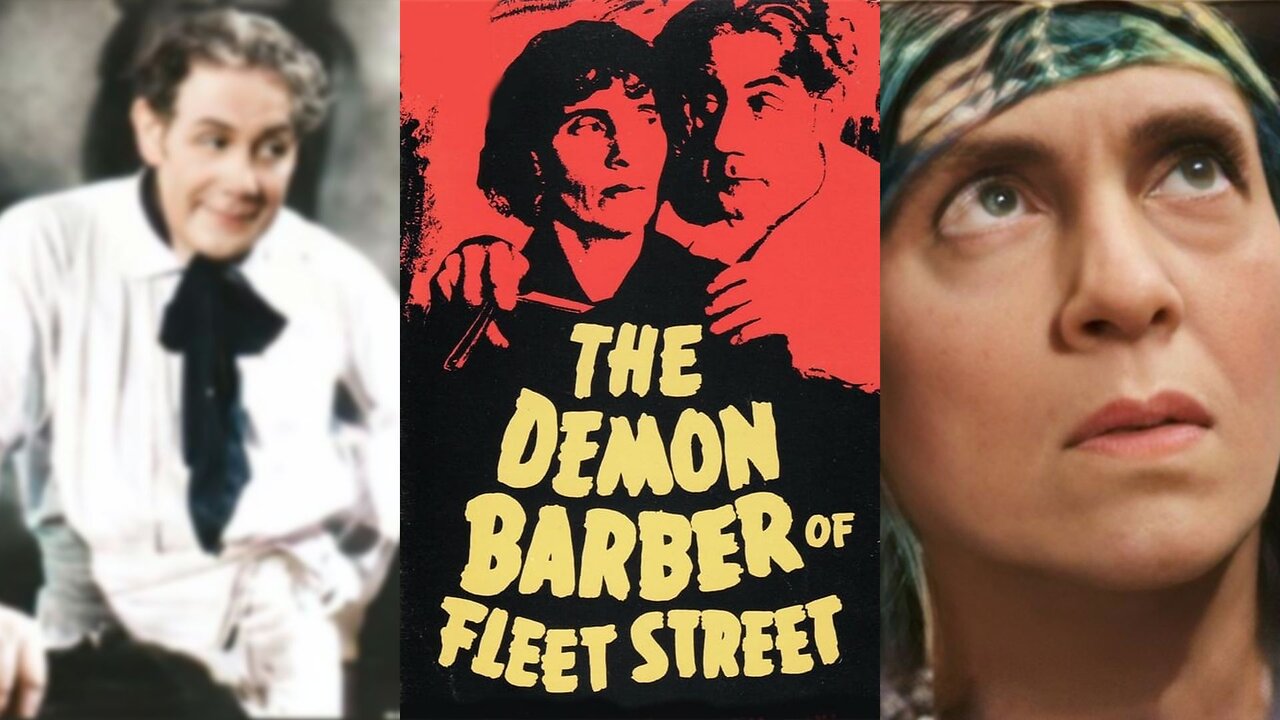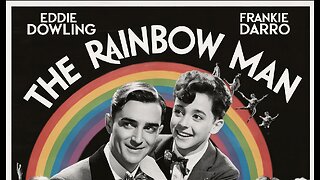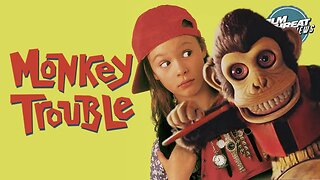Premium Only Content

SWEENEY TODD: DEMON BARBER OF FLEET STREET (1936) Tod Slaughter & Stella Rho | Crime, Horror | B&W
Sweeney Todd: The Demon Barber of Fleet Street is a 1936 British drama film produced and directed by George King, and written by Frederick Hayward, H. F. Maltby, and George Dibdin-Pitt. The film features actor Tod Slaughter as the barber Sweeney Todd.
SYNOPSIS
A Fleet Street barber recounts the story of Sweeney Todd, a notorious barber who in the last century murdered many customers for their money.
The film starts in 1936 as a barber tells a patron the story of the infamous Sweeney Todd. In 1836, Sweeney Todd (Tod Slaughter) is a barber with a shop near the docks of London. One day, as the mercantile ship The Golden Hope readies to leave, Todd watches Johanna Oakley (Eve Lister) and Mark Ingerstreet (Bruce Seton). They are in love, but Mark is shipping out and laments that he is a poor man unable to win the approval of Johanna's father, Governor Oakley (D. J. Williams). Nearby, Johanna's servant Nan (Davina Craig) asks Mark's fellow sailor Pearley (Jerry Verno) to buy her various luxury goods while he's away. Pearley points out he hasn't the money to buy them. Simultaneously, Todd watches all his potential customers and thinks of the money he can make.
CAST & CREW
Tod Slaughter as Sweeney Todd
Stella Rho as Mrs. Lovatt
John Singer as Tobias Ragg
Eve Lister as Johanna Oakley
Bruce Seton as Mark Ingerstreet
D. J. Williams as Stephen Oakley
Davina Craig as Nan
Jerry Verno as Pearley
Graham Soutten (credited as Ben Souten) as Beadle
Billy Holland as Mr. Parsons
Norman Pierce as Mr. Findlay
Aubrey Mallalieu as Trader Paterson
Directed by George King
Written by Frederick Hayward, H. F. Maltby
Based on The play by George Dibdin-Pitt
Produced by George King
Cinematography Jack Parker
Edited by John Seabourne
Music by Eric Ansell
Production company George King Productions
Distributed by Metro-Goldwyn-Mayer
Release date March 1936
Running time 71 minutes
Country United Kingdom
Language English
NOTES
Prior to the film, two previous adaptations of the character were produced in the United Kingdom. The first was Sweeney Todd from 1926 starring G.A. Baughan and again in 1928 with Moore Marriott as Sweeney Todd.
In The Unknown 30s: An Alternative History of the British Cinema 1929-1939 (1998), Jeffrey Richards stated the film was a simplified version of the story dramatized by George Dibdin-Pitt, noting that the story is simplified with events rearranged and some character eliminated. Richards stated what was kept was the familiar melodramatic elements including secret passages, disguises and star-crossed lovers.
Author Ian Conrich noted that British horror cinema is often absent from historical discourse in 1930s films, and not usually acknowledged until film companies like Hammer Films developed their work in the late 1950s. Conrich stated there were no true horror films of the era, but films that had a "horrific" nature that were predominantly comedies, thrillers or melodramas. The films of Tod Slaughter including The Face at the Window (1939) and Sweeney Todd, the Demon Barber of Fleet Street (1936) were described by Conrich as being "intended as melodramas: highly theatrical, mischievous and pantomimical."
Release
Sweeney Todd, The Demon barber of Fleet Street was released in the United Kingdom in March 1936. The film was released in the United States in 1939 by Select Pictures. It was reissued in 1940.
Reception
On its initial release, Kinematograph Weekly praised the production as a "colourful period thriller, smoothly adapted" while the Monthly Film Bulletin stated that the "Direction and much of the action belong to the stage." and "a certain amount of the necessarily gruesome atmosphere has been caught and the story itself is so good that the film has some success." On its release in the United States in 1939, Variety stated it would "find the pickings none too certain in this country [...] Tod Slaughter, billed as 'the horror man of Europe', is the star. He overacts ridiculously [...] From the action and dialog to the direction of George King the picture is stamped with mediocrity" and that "Technically, including photography, film is way below standard."
From a retrospective review, Kim Newman gave the film a three stars out of five rating, writing in Empire that the film was a "Wonderful Victorian horror melodrama brought to the big screen with one of the forgotten marvels of British cinema, Todd Slaughter on top form"
-
 48:07
48:07
Lost n Found Films
14 hours agoTHE RAINBOW MAN (1929)Eddie Dowling, Marian Nixon & Frankie Darro | Comedy, Drama | B&W | Cinema Gem
52 -
 1:03:32
1:03:32
Winston Marshall
3 days ago"War On Children!" The DEMISE Of The West Starts With Schools - Katharine Birbalsingh
16.4K18 -
 1:45:00
1:45:00
RG_GerkClan
4 hours ago🔴LIVE Sunday Special - It's Time for World Domination - Civilization VII - Gerk Clan
14K6 -
 LIVE
LIVE
Major League Fishing
3 days agoLIVE Tackle Warehouse Invitationals, Stop 1, Day 3
684 watching -
 23:34
23:34
marcushouse
5 hours ago $4.48 earnedBREAKING: Starship Launch IMMINENT – But What’s This SURPRISE Flight 9 Plan?! 🚀🔥
18.5K3 -
 8:43
8:43
Film Threat
23 hours agoTHE MONKEY | Film Threat Reviews
35.6K1 -
 15:55
15:55
TSPLY
1 day agoThe Media Is Very Afraid Of FBI Director Kash Patel
23.2K24 -
 6:57
6:57
Cooking with Gruel
18 hours agoMake Cheese Great Again
19.7K10 -
 5:17
5:17
Mrgunsngear
21 hours ago $5.20 earnedPresident Trump Has Appointed A New ATF Director
27.5K23 -
 48:17
48:17
Athlete & Artist Show
8 days ago $0.48 earnedS5E1: Chucky Announces First Kid, 4 Nations Face Off, and more!
14.6K